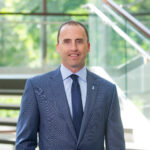
In 2021, insurer and financial services company Nationwide reported the strongest earnings in the Fortune 100 company’s history—$2.8 billion in operating income with sales of over $50 billion, another record number.
Executive Summary
Mark Berven, the COO of Nationwide P/C, talked to Carrier Management about how major investments in technology and talent, which started being made in the mid-2010s, fueled record volume of $19 billion in 2021 and $1 billion in net operating profit. One key to success—a mutual structure that allowed the company to make decisions to modernize faster than public competitors who struggle to get past the lag between spending hundreds of millions of dollars and the ultimate expense savings to come in the future.Since 2015, Nationwide has taken out over a billion dollars in P/C expenses, with another half billion on deck.
What wasn’t immediately apparent in a late-February media statement announcing those results was the contribution of property/casualty operations to those numbers—roughly $1 billion in profit, $19 billion in P/C premiums and a 5-point improvement in the combined ratio over the prior year.
In mid-April, Mark Berven, the president and chief operating officer of Nationwide Property and Casualty, shared the P/C figures with Carrier Management and described the future-focused transformations of both Nationwide’s personal and commercial lines operations that started seven years ago, propelling the businesses to their new heights in 2021.
“We really began an effort around investing in the future in the mid-2010s. So, 2015, 2016, we started making massive investments for what we thought the future of our businesses would need,” Berven said. “It was really placing bets around modernizing our technology and creating a platform to innovate off of…We also felt as if that would give us a chance to review all of our processes and products, rationalize in order to meet customer needs but figure out a way that we could drive improved efficiency and better customer experience through all parts of the value chain.”
He continued: “It really began a mindset shift for the organization around what we thought the future would bring. And that’s coming to fruition with digitization of business models, working in a new kind of agile model, constantly testing ourselves to rethink what’s possible.
“And a big part of that effort, though, was about investing in our workforce,” he added. “We started a Future of Work program that was provided to all Nationwiders really with a focus on reskilling, upskilling and providing the capabilities that would be needed to compete as we continue to move forward with a better understanding by our workforce of what does it mean to drive a digital operating model and how do we utilize agile planning processes versus kind of the historical way that planning would take place.”
Said Berven, “That really has contributed to expense ratio improvements but also better customer experiences for our distribution partners as well as the end consumer.”
Included in the efforts on the commercial side were investments in new platforms to make small business easier for agents and brokers to place, moves to develop specialties in distinct sectors of the middle market, and even leaps into the world of reinsurance and global account business.
Along the way, Nationwide spent roughly $750 million in technology investments and in 2020 made a five-year, $160 million investment in talent, equipping associates with digital literacy and future capabilities training. During an hour-long phone interview recently, Berven described all the changes and advanced the idea that Nationwide’s structure as a mutual allowed the company to move earlier than peers.
Parts of the interview relating to commercial insurance, specialty and reinsurance are presented below. Berven’s answers to questions about personal lines and telematics are available on the Carrier Management website.
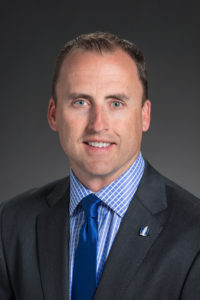
Q: The annual report states that Nationwide is prioritizing capital deployment toward growth in commercial and specialty lines in 2022. Discuss how and why the personal and commercial lines mix is shifting.
Berven: 2021 was the first year in the property/casualty company’s history that we actually had more commercial premium volume than personal lines premium volume. That shift took place because of accelerated capabilities across our commercial portfolio.
We really have three areas in our commercial portfolio.
The first is our standard commercial or retail commercial business, which is the traditional small market, as well as mid-market commercial operations that we insure.
Nationwide has long been an industry leader in providing solutions to small business owners. [And] around 2014, we began a multiyear effort to really build a new platform product, create new processes designed around delivering a better experience in our standard commercial lines. And we saw the uptake of that hit with new platform releases and new product in 2021. So, small business quotes, new business binds all saw tremendous increases.
We attribute that to ease of use. The ability for a distribution partner to quickly navigate through a quote, get automated responses—really, as you think about that small business owner space, that is what is critical…
The delivery of our new platform in 2021 really hit at the right time, creating that efficiency and speed to go through our small business processes. So, we saw a tremendous uptick there.
In mid-market commercial, we also have built capabilities over the last few years to really create distinctive risk management capabilities across the value chain in a few critical areas, which was also a catalyst for growth. [We have built] an industry vertical specialization from distribution, underwriting, claims, loss control, services in construction, in human services (think of nonprofits, treatment centers, senior living facilities…) and in food…All really were a catalyst for growth for us in ’21 and have taken off here in ’22 after the first quarter as well.
On our standard commercial business, we saw near double-digit growth in 2021. And we’re doing the same thing again here in ’22.
Q: For the second area of commercial business at Nationwide, E&S/specialty, Nationwide announced the launch of Geneva Re a few years ago. And in 2020, the N2G partnership was also announced. What are those about?
Geneva Re is a joint venture that we launched about two years ago with Ryan Specialty Group, really with a focus on two distinctive business opportunities. [One was] program business and having highly effective program managers that bring distinctive capabilities and large books of business with them. [The other is] on the reinsurance side. This led to about a half-billion dollars of growth in 2021 through those efforts with Geneva Re.
Our N2G operation is a partnership with Generali, located and headquartered out of Italy, which is really about doing multinational global mid-market business through a reciprocal where Nationwide provides the underwriting and service capabilities for all domestic U.S. operations and Generali handles European operations. [Previously], we have not been multinational or global, and this provided an opportunity given some of the customer needs that we continue to see evolving as operations become more and more global. This was a way for us to enter into that marketplace with a great partner in Generali…N2G brought us a couple hundred million of growth in ’21 and really positioned [us] to accelerate here in ’22.
Outside of that, we saw good growth across all of our core E&S business. The marketplace drove growth there, and the rate environment was obviously very favorable in that segment of the industry as well.
…The last [commercial area] is our Nationwide Agribusiness division…Nationwide started in 1926 as the Ohio Farm Bureau Insurance Company. And agribusiness has long been an important part of what we do. We’re the largest provider of farm insurance in the industry today. And so, that business line also continued to grow for many of the same reasons that I described in the standard commercial portfolio—new platform and products coming out in our farm space. We provide insurance for nine state farm bureau systems…
Mark Berven, Nationwide
Q: Going back to Geneva Re: Is Ryan Specialty the program manager? Is Nationwide providing reinsurance? How does that exactly work?
Berven: Ryan Specialty reached out to Nationwide in conversations a couple of years ago. They always had been on the broker or the distribution side, and they were interested to see if there was a way for them to begin to get in on the risk side of the business.
In essence, they invested capital; Nationwide invested capital. We established this new entity that provides a 50/50 split of revenues and profits between Nationwide and Ryan Specialty Group. Within that they have constructed their own operations—that’s where the program managers sit that produce the business but then submit that business into this new entity.
That is where opportunity for growth is. But then it provides both Nationwide and Ryan Specialty the opportunity to share profits. [There is] a heavy focus on partnering with the right program managers…
On the reinsurance side, [we] are a reinsurer provider through Geneva Re. And our client list is like any other reinsurer. We partner with them to provide offerings to the top 20 insurance providers. Many of them are our clients through this venture. And it’s just a new way for us to get into markets that we had not been in previously.
Q: Earlier, you mentioned a five-point improvement in the combined ratio. Unpack that: Was the improvement lower losses and lower expenses, or was it a function of better market conditions driving higher premium volume?
Berven: All. We saw improved loss ratio in all of our businesses and the contribution of that related to investments that we had made through data analytics, underwriting and claims. But also we saw a benefit obviously through rate increases that collectively were in line with industry averages as well. As rates were going up in commercial in aggregate 6 or 7 percent, varied by line of business, all of those things contributed to performance improvement.
Q: Financial analysts are reporting that the P/C insurance industry’s expense ratio last year was the best in five years as carriers work to increase operational efficiencies and cut costs. Talk specifically about what you’ve done in the area of cutting costs—outsourcing, automation, investments in technology.
Berven: All. You just hit it…Since about 2015, we’ve taken out over a billion dollars in P/C expenses. We are coming to the next tranche of work where over the last two years, plus this year, we’ll have another over a half-a-billion dollars of expense removal from P/C expenses. And really, this goes back to my long answer early on. It’s a combination of things.
So, it was really about looking to the future. How did we think business models would change? [How would] consumers…want to navigate the insurance experience, and how are distribution partners lining up with that as well? And we’ve seen efficiency across all of those areas.
It started with kind of this mindset that we had of modernizing all of our processes. [And] as we were going through technology modernization, to simply put it I would say, we looked at everything and thought, what can we eliminate? What can we then automate? And then let’s optimize what’s left.
So, that elimination process was all around really testing ourselves around the old rules that we had embedded within underwriting or claim processes, and the way that we had built technology, and really from a perspective [of] were those things testing through analytics? Were we getting the value out of all of those old processes?
Also, [we tapped into] third-party opportunities where we could capture data that we needed without [having] to run [questions] through a distribution partner to go to a customer, and…follow up with email. Third-party data availability [helping with] that elimination of unnecessary steps in the process [was] critical.
Then when we looked at what we had left, were there opportunities to create more efficiency through automation? Here, what was critical was really looking at the customer journey—understanding where automation was the best route and where human interaction still adds value—and being very purposeful. [You] don’t automate everything because there are steps in the process that, from a consumer confidence perspective, that relationship and human voice on the other end of the interaction adds value.
Then at the end of the day, optimization is just about how do we continue to find ways to take cost out. Is there a different org model? Are there opportunities for us just through other efficiency efforts, like lean management that we can find that [can help us] complete [remaining] processes more efficiently than the way that we had approached them before?
Q: Discuss one or two key areas where you went the route of automation.
Berven: One was in the underwriting process. We looked at it, and as we would talk about our commercial and [about] what was a catalyst for the growth that we saw in our small business owner segment, [we recognized that] margins are small in that category, especially for distribution partners. They don’t want to spend time in the interaction, having a lot of back and forth.
What we were able to do by making investments in data and analytics was to automate large parts of that underwriting process. So, now on a bypass—no human touch—an agent enters in a quote from a client [and] it goes through the system with no touch. In the small business segment, [we’re] looking at getting three-fourths of business to flow that way. A couple of years ago, maybe it was 10 to 15 percent…That automation made a huge impact on the economics of the transaction and the ease for the distribution partner, which helps them in their mind figure out which carrier they want to go to.
Another one would be in automating parts of the claim process…The old way of estimating a vehicle [meant] an adjuster would go out and inspect the car, write an estimate, provide the estimate and payment to the customer. The customer then would go into the body shop. The body shop might look at that and no problem it runs through, or maybe they find that there’s something additional. And it creates a lot of back and forth in the interchange and sometimes puts the customer in the middle of that.
Now with new processes, through digital photographs of the vehicle, we can, through a predominantly automated environment, provide an estimate that is completed without the need to wait for that scheduling of the adjuster. The estimate through the photos can be exchanged immediately with the body shop. And it takes time out of the process. It provides a better customer experience through all of that because the claim is settled more quickly [and] it provides efficiency and economic benefit to both the body shop and the insurance carrier as well, which ultimately then gives us the opportunity to have that built into our rating plans.
Q: Were those automation tools built in house by Nationwide or are they third-party tools?
Berven: Predominantly built through Nationwide. Now with that, we had vendors that we may have partnered with on a part of the process, in particular on that claim side, but it was predominantly an in-house solution.
Q: How much has Nationwide spent on developing new technology?
Berven: You heard me talk about commercial lines transformation…We also have personal lines transformation, [and] we started these efforts in the 2013, ’14, ’15 time frames. Over that period of time from let’s just say 2015 through today, we invested about three-quarters of a billion dollars in those technology process and product modernization efforts.
It had to be a multiyear effort, obviously, because you couldn’t take that type of a cost all upfront all at one time. But one of the things that we think about as a mutual company is this balance between making sure that we’re investing for the future in a way that will deliver the products and experiences that our distribution partners and customers need while also balancing what we need to do from a performance basis.
And one of the dynamics that we definitely are seeing is we made big investments during that middle-2010 time frame that were not going to pay off with immediate benefits—just from the lag time of all of these builds, and all of the efforts that I just described. 2021 was the first year since those investments were made that we began to see more of the significant deployment to the market. And we clearly see the impact in better financial performance, better agency feedback around our capabilities and better customer feedback.
So, you have to make investments in order to continue to be relevant moving forward. And we have we believe a unique opportunity to do just that as a mutual—and nothing against public companies…Many of our distribution partners are public companies. But the flexibility of not having to always be myopically focused on the next earnings call and quarterly report—that you can take a longer-term view of the health of the business and how you deliver for customers, that we think is really beginning to pay off as these new capabilities are hitting market.
Q: So, you think that the mutual form of ownership helped you be able to invest earlier? I’m paraphrasing…
Berven: It absolutely did. So, paraphrased that way, you bet.
Q: Would it be correct to say that companies that haven’t started or started more recently, say within the last four or five years, won’t be able to catch up to the likes of Nationwide? Or who aren’t large enough to put in three quarters of a billion into the effort?
Berven: That’s incumbent upon us, right? If we stand pat, those companies will catch us. But we don’t believe that we’re going to stand pat. We know that these platforms are now creating more opportunities for us, and we see it.
So, our ability to deploy new products is about 50 percent faster than it was prior to having these new technology platforms in place. Speed to market and continuing to find ways to be more efficient are absolutely critical to keep that gap, a positive gap for Nationwide…
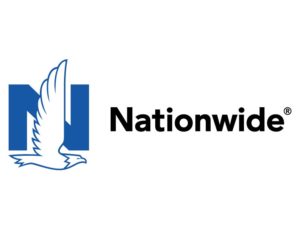 2021 was the first year in the property/casualty company’s history that Nationwide had more commercial than personal lines premium volume.
2021 was the first year in the property/casualty company’s history that Nationwide had more commercial than personal lines premium volume.Q: Were there any reductions in your workforce that happened as Nationwide invested in technology and automated processes?
Berven: There were. And this [brings me to] one of the things that culturally is really important to Nationwide— creating a culture of engagement for our workforce. We could share with you all of [our talent management] accolades—we can give you that commercial—but one of the important parts [of our transformation] was being transparent with our associates about what we did think would take place in the future.
So, well in advance of the technology actually hitting the marketplace, we were sharing with associates these investments that we were making and were sharing our best perspective as to how that would begin to impact our workforce. That is when we really began our dedicated effort on upskilling, reskilling [effort]. We called it the Future of Work program.
We began to see that while we may need less individuals for a part of the work effort that was being automated, we knew that we were changing the way that we worked. And so, with a focus on trying to provide more digital skills, analytic skills, we provided an online training curriculum that could be customized to individuals so that they could go through, and based upon their own interest—it was not mandated, but [they] were provided the opportunity to go through that training [so they could] have better opportunities to continue with Nationwide in the emerging areas that we knew would be critical for the business.
We also knew while maybe not everyone would stay with Nationwide through that process, we felt as an employer, if we could provide associates with the opportunities to upskill, they would be better candidates if they had to look somewhere else.
So, we did see workforce impact as we automated more, but we have also seen a tremendous amount of those reskilled associates moving to new and different positions. And through the period of time that we saw the most significant impacts to our employee counts through these changes, we also saw our highest engagement scores as measured by Gallup. And a big part of that was being transparent, communicating and putting as much as we possibly could into the hands of our associates to manage their careers.
Q: In addition to having been on the Fortune list of “100 Best Companies to Work For” for many years, Nationwide was also one of the first companies to say that it was moving to a more permanent remote work solution—closing down some buildings and moving to just four campuses. What has the transition been like? How is Nationwide dealing with issues of maintaining culture that other carriers speak about?
 Berven: The culture is not a building. The reality is that while we need to invest in our culture differently than what we have done in the past, we’ve always had a focus here on helping remote workers.
Berven: The culture is not a building. The reality is that while we need to invest in our culture differently than what we have done in the past, we’ve always had a focus here on helping remote workers.
Today, almost half our workforce in P/C does work from home on a permanent basis. That’s up from pre-pandemic where maybe it was around 30 percent. But we had 30 percent of our workforce pre-pandemic that was working from home. So, we already had good efforts as it related to what did we need to do to connect the culture to those that aren’t walking into a Nationwide building every day.
What we have learned over time is that the most important relationship in how an associate feels about their company is their immediate leader, their manager. [And] we continue to really lean in on our investment in our management team to make sure that we’re listening. What are the emerging needs of the workforce that we have today? What are ways that we can engage purposefully in connecting people to the Nationwide culture, no matter where they live? That is a programmatic effort that we have across the company.
I would say we’ve got less than 10 percent of our workforce that is permanently in office. So, I said, we’ve got about 50 percent of our workforce that is permanent work-from-home. We’ve got about 40 percent of the workforce in P/C that is hybrid today—there is some connectivity into an office, but they may work in the office two days a week, a couple of weeks out of the month.
[The key] is making sure that it’s done with purpose. How do we have teams together at the right time to foster collaboration…Rather than just come into an office [and] you sit at your desk every day, what are the engaging opportunities that we have so that when people are in the office, there are certain activities that lend more to driving that comradery…
I don’t know that anyone has the perfect answer for how this will all work today. The most important thing is to be flexible and adaptable, and as a leadership team be willing to listen. I think that’s our big learning through all of this: No matter what we thought all of our good laid plans would bring us, the most important part was establishing associate feedback sessions…
We’ve relied heavily upon associate resource groups to give us feedback, to help shape where we need to go for the future. It has been probably the best thing that we’ve done, making sure that we continue to always have that open door policy to figure out what we need to do next.





















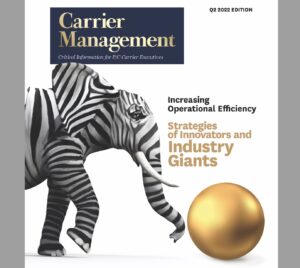
 Berkshire Hathaway Announces Leadership Appointments: New CEO at GEICO
Berkshire Hathaway Announces Leadership Appointments: New CEO at GEICO 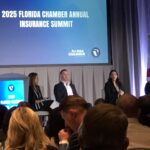 ‘Dream Is in Sight:’ Chamber, Reinsurers, Insurers Urge Florida to Stay the Course
‘Dream Is in Sight:’ Chamber, Reinsurers, Insurers Urge Florida to Stay the Course  New York Times Sues Perplexity AI for ‘Illegal’ Copying of Content
New York Times Sues Perplexity AI for ‘Illegal’ Copying of Content  Hong Kong Fire Reveals Contractor Safety Breaches, Residents’ Revolt
Hong Kong Fire Reveals Contractor Safety Breaches, Residents’ Revolt 



